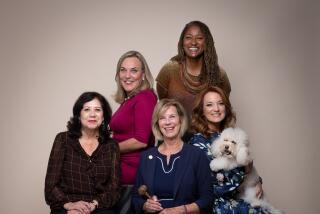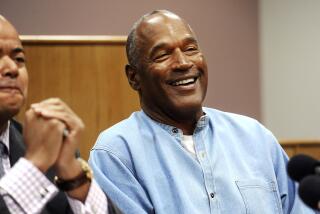Demographics Favor Racial Parity for O.J. Simpson Jury : Courts: The district in which the case is to be heard has a higher percentage of blacks than the countywide population.
Juries in many Los Angeles County courthouses are disproportionately white, except in the court district where O.J. Simpson will be tried, according to a demographer and a former county jury official.
The central court district, where Simpson’s case will be heard, has a larger percentage of African Americans than the countywide population.
“If I were a defense attorney I would fight tooth and nail to keep the case in the central district,” said Edgar Butler, a demographer and professor of sociology at UC Riverside.
He attributes the racial disparity to competition for jurors among Los Angeles County’s 11 court districts and a requirement that jurors be allowed to serve within 20 miles of home.
Surveys of actual jurors in the central district show they are about 46% white, 25% black, 19% Latino and 10% Asian, according to Richard Gabriel, an associate of Trial Logistics, the Pasadena jury consulting firm hired by Simpson.
Of county residents who are eligible to serve on juries, 58% are white, 20% Latino, 14% black, 7.5% Asian and Pacific Islander, according to 1990 figures from the office of the jury commissioner.
A criminal defendant has the right to be tried in the court district in which the crime occurred. Even though Nicole Brown Simpson and her friend Ronald Lyle Goldman were killed in Brentwood, prosecutors decided to try Simpson in the central district in Downtown Los Angeles, making it substantially more likely that African Americans will be on his jury.
By law, juries are supposed to be racially representative of the court district in which the defendant will be tried. Racial representation can vary according to how the district is defined.
Los Angeles County judges have held that juries must only reflect the racial makeup of legislatively defined judicial districts, which allows juries in the outer districts to be dominated by whites, said Raymond F. Arce, retired deputy executive officer for Los Angeles Superior Court.
“There is a court in Malibu, for example,” said Arce, who oversaw juror services until he retired in December, 1992. “I would very seriously doubt the court in Malibu gets anywhere near the county demographic figures with respect to blacks or Latinos--ever.”
A 1990 county survey of people who reported for jury duty showed one courthouse on the Westside had a jury pool that was 79% white, compared to 48% white in the central courthouse Downtown.
During the last 25 years, juries across the nation have undergone major changes. Before the passage of a 1968 federal law, most jurors were chosen by a jury commissioner from a select group of upstanding citizens in the community. They were mostly white, middle-class men. Today’s juries contain more women and minorities.
Only 17% of the adult American public has served on a trial, according to the 1990 study, and only 45% have been called to serve.
Los Angeles County selects jurors from voter registration and Department of Motor Vehicle lists. The county mails out more than 3 million questionnaires a year to determine who is eligible to serve. Jurors must be citizens, 18 or older, and have no felony record.
Gloria Gomez, manager of juror services for the county, said only 15% to 18% of the residents mail back the questionnaires.
The office of the jury commissioner then mails out about 400,000 to 500,000 summons a year. About half of those who are summoned perform jury duty, according to Gomez.
Many of those who are excused claim financial hardship because their employers do not pay for jury service, Arce said, or they obtain medical excuses from their doctors.
More to Read
Sign up for Essential California
The most important California stories and recommendations in your inbox every morning.
You may occasionally receive promotional content from the Los Angeles Times.











